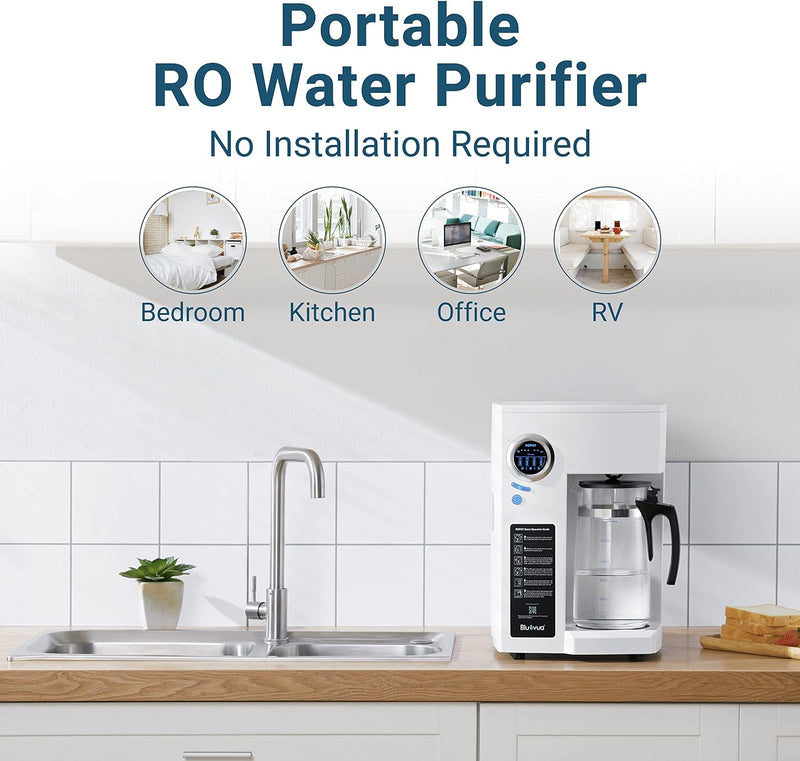Unlock Crystal Clear Water: Discover the Best Countertop Reverse Osmosis Systems That Will Transform Your Home!
In an era where water quality is becoming an increasing concern, the need for effective filtration systems is more crucial than ever. Countertop reverse osmosis (RO) systems have emerged as a popular solution, providing households with clean, safe drinking water. Unlike traditional filtration methods that may only scratch the surface, RO systems dive deep into the purification process, effectively removing contaminants and impurities. The convenience of countertop models, which are easy to install and maintain, makes them an excellent choice for many households. Whether you're in a compact apartment or a larger home, a countertop RO water system can seamlessly integrate into your kitchen, ensuring you have access to crystal-clear water whenever you need it.

Understanding Reverse Osmosis Technology
Reverse osmosis is a water purification technology that utilizes a semi-permeable membrane to remove ions, molecules, and larger particles from drinking water. The basic principle behind this process involves pushing water through the membrane under pressure, effectively filtering out contaminants such as heavy metals, chlorine, and even certain bacteria and viruses. This multi-stage filtration process typically includes pre-filters to remove larger sediments, the RO membrane itself, and post-filters to polish the water before it reaches your glass. The result? Clean, purified water that tastes great and is safe for consumption. It’s worth noting that RO systems are particularly effective at addressing issues found in tap water, such as lead and other harmful substances, making them a reliable choice for households concerned about their water quality.
Why Choose a Countertop RO System?
Countertop RO systems offer numerous advantages over traditional under-sink or whole-house filtration systems. One of the main benefits is ease of installation; most countertop systems require minimal assembly and can be set up without professional help. This makes them particularly appealing for renters or those in smaller living spaces where permanent installations are impractical. Additionally, countertop systems are portable, allowing you to easily move them from one location to another if needed. Maintenance is typically straightforward, often requiring just a filter change every few months. Their effectiveness in various settings, combined with their compact design, makes countertop RO systems a versatile choice for anyone looking to improve their water quality without the commitment of larger systems.
Key Features to Look For in Countertop RO Systems
When selecting a countertop RO system, several key features are essential to ensure you choose a model that meets your needs. First, consider the number of filtration stages; a higher number usually translates to better purification. Look for systems that include additional features such as remineralization filters, which can restore essential minerals to the water after the reverse osmosis process. The water flow rate is another critical factor; a higher flow rate means you won't have to wait long for fresh water. Storage capacity is also important, especially for families or those who consume water in large quantities. Lastly, always check for certifications from recognized bodies, as these can provide assurance regarding the system's performance and safety. Customer reviews can also offer insight into the system's effectiveness and ease of use, guiding you toward a well-informed decision.
Comparing Countertop RO Systems
When comparing different countertop RO systems, it's essential to evaluate them based on several criteria, including features, performance, and user ratings. Some models may focus on higher filtration capabilities, utilizing advanced multi-stage processes that can remove a broader spectrum of contaminants. Others may prioritize speed, providing quicker access to purified water, which can be a decisive factor for busy households. Portability can vary significantly; some systems are designed to be lightweight and easy to move, while others may be bulkier and more suited for permanent placement. It's also beneficial to consider the design and aesthetics of the unit, especially if it will be a visible part of your kitchen. User ratings can provide valuable insights—look for patterns in feedback regarding reliability, taste of the water, and ease of maintenance. By weighing the pros and cons of each system, you can find the countertop RO system that best fits your lifestyle and needs.
Final Thoughts on Countertop RO Systems
In conclusion, countertop reverse osmosis systems stand out as a practical and efficient solution for those looking to improve their drinking water quality. With their easy installation, portability, and advanced filtration capabilities, they cater to a wide range of households and lifestyles. As you consider the various options available, remember to evaluate your specific needs, whether it’s the number of users in your home or the types of contaminants you wish to remove. Making an informed choice will not only provide you with cleaner, safer water but also enhance your overall well-being. Embrace the convenience and reliability of a countertop RO system, and enjoy the peace of mind that comes with knowing you're drinking the best quality water possible.










Comments